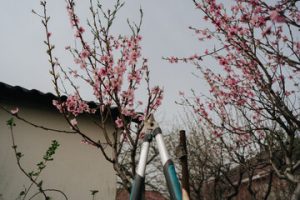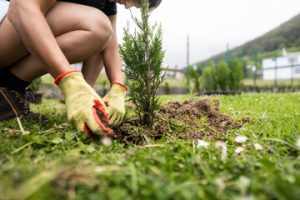Proper tree care and maintenance are vital for preserving the health, beauty, and longevity of trees. Whether you have a few ornamental trees in your yard or manage a large landscape, understanding the right techniques ensures trees thrive in every season. Healthy trees not only enhance property value but also provide shade, improve air quality, and support local ecosystems.
1. Regular Watering for Optimal Growth
Trees require consistent moisture to remain healthy. Deep watering encourages strong root systems, especially for young or newly planted trees. Unlike shallow watering, which only dampens the surface, deep watering penetrates the soil and nourishes roots effectively. Watering early in the morning or late in the evening minimizes evaporation and ensures trees receive the moisture they need.
2. Mulching for Soil Protection
Mulch acts as a protective barrier that retains soil moisture, regulates temperature, and suppresses weed growth. Applying organic mulch around the base of the tree—while keeping it away from the trunk—promotes root health and prevents damage from lawn equipment. Over time, mulch breaks down and enriches the soil, providing essential nutrients for growth.

3. Proper Pruning Techniques
Pruning is essential for tree structure, safety, and overall health. Removing dead, diseased, or broken branches reduces the risk of pests and improves air circulation within the canopy. Always use sharp, clean tools and make precise cuts to avoid unnecessary damage. Pruning during dormant seasons often yields the best results, but specific tree species may require different timing.
4. Monitoring for Pests and Diseases
Insects and diseases can significantly weaken trees if left untreated. Regular inspections help identify early signs such as discolored leaves, unusual growth patterns, or bark damage. Integrated pest management strategies, including biological controls and targeted treatments, protect trees without harming the environment. Addressing problems early prevents costly damage and ensures long-term health.
5. Fertilization for Nutrient Balance

Nutrient-rich soil is essential for strong growth. While mature trees often thrive without added fertilizer, younger trees or those growing in poor soil benefit from balanced fertilization. Using slow-release fertilizers ensures nutrients are absorbed gradually, promoting steady growth. Always test the soil first to avoid over-fertilization, which can lead to stress and environmental harm.
6. Soil Care and Root Protection
Healthy roots are the foundation of a thriving tree. Compacted soil restricts root growth and water absorption, so aerating the soil when necessary can improve oxygen flow. Avoid heavy foot traffic and construction activities near root zones to prevent damage. Installing root barriers can help guide roots away from structures and underground utilities.
7. Seasonal Tree Care Practices
Trees require different care throughout the year. In spring, inspect for winter damage and apply mulch as needed. Summer care focuses on watering and monitoring for pests, while fall is ideal for pruning and fertilizing. Winter preparation includes wrapping young trees in protective materials to prevent frost damage. Adapting care routines by season supports long-term vitality.

8. Safe Tree Removal When Necessary
While the goal is always preservation, some trees become hazardous due to severe disease, storm damage, or structural instability. Removing dangerous trees protects property and people from accidents. Hiring trained professionals for tree removal ensures safety and prevents damage to surrounding landscapes.
9. Supporting Tree Longevity Through Professional Care
Even with proper maintenance, some situations require expert intervention. Certified arborists can diagnose complex issues, provide specialized treatments, and recommend structural support systems. Professional evaluations help maintain the health and beauty of trees, especially those that hold significant aesthetic or historical value.